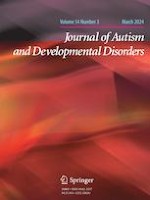13-12-2022 | S:i: .developmental Approach and Targeted Treatment of Sensory Alterations
Brief Report: Differences in Naturalistic Attention to Real-World Scenes in Adolescents with 16p.11.2 Deletion
Gepubliceerd in: Journal of Autism and Developmental Disorders | Uitgave 3/2024
Log in om toegang te krijgenAbstract
Sensory differences are nearly universal in autism, but their genetic origins are poorly understood. Here, we tested how individuals with an autism-linked genotype, 16p.11.2 deletion (“16p”), attend to visual information in immersive, real-world photospheres. We monitored participants’ (N = 44) gaze while they actively explored 360° scenes via headmounted virtual reality. We modeled the visually salient and semantically meaningful information in scenes and quantified the relative bottom-up vs. top-down influences on attentional deployment. We found, when compared to typically developed control (TD) participants, 16p participants’ attention was less dominantly predicted by semantically meaningful scene regions, relative to visually salient regions. These results suggest that a reduction in top-down relative to bottom-up attention characterizes how individuals with 16p.11.2 deletions engage with naturalistic visual environments.
